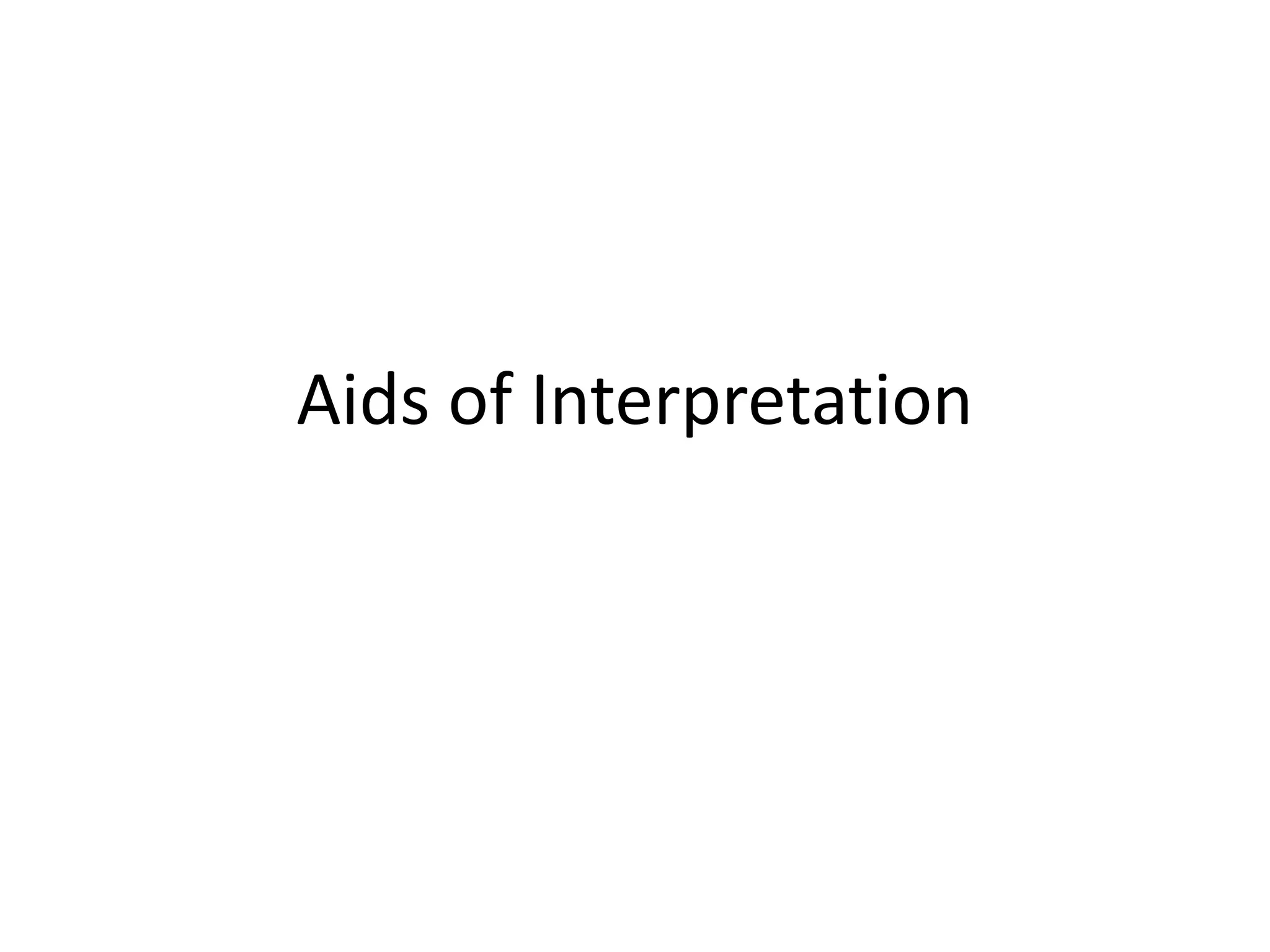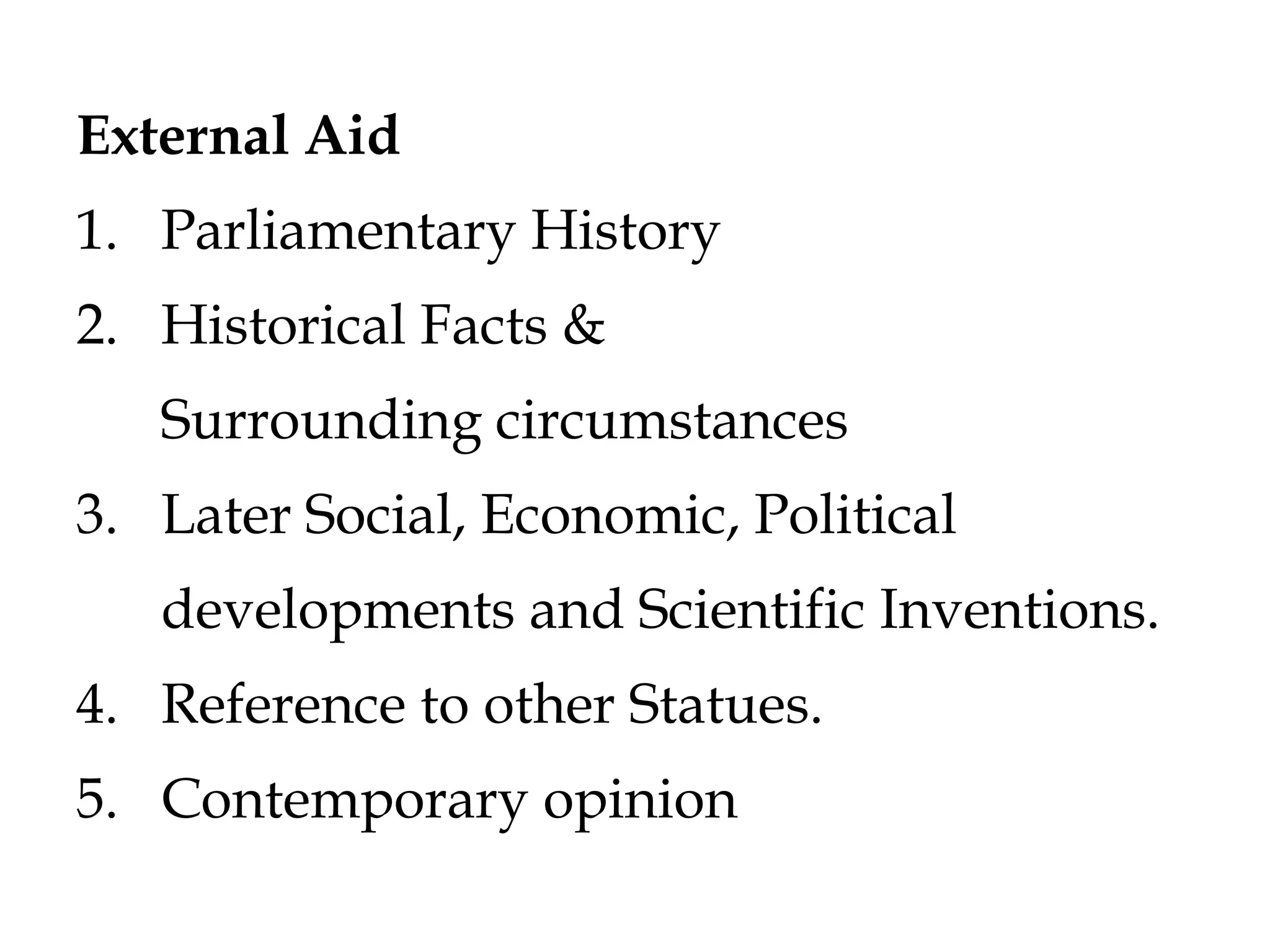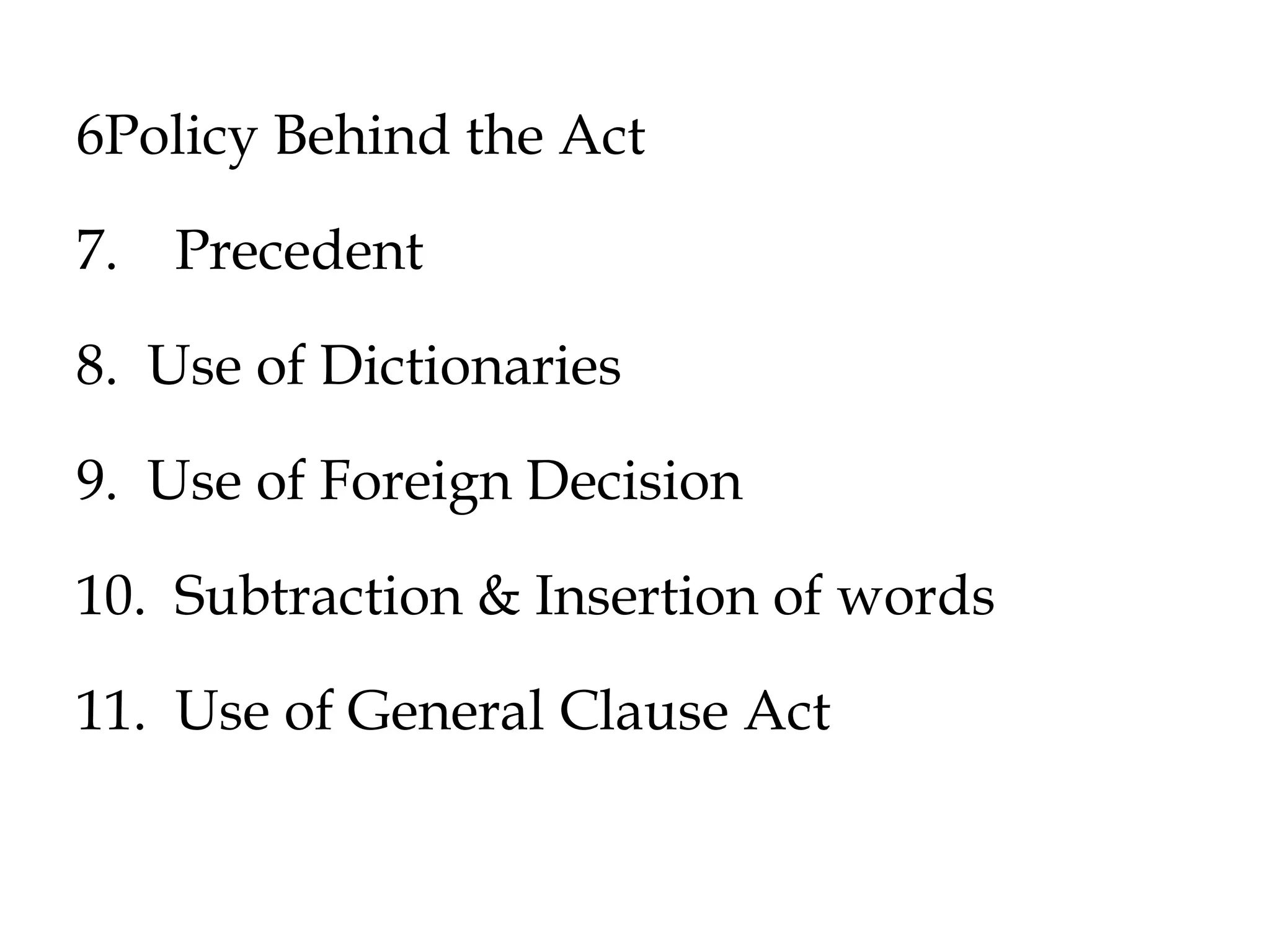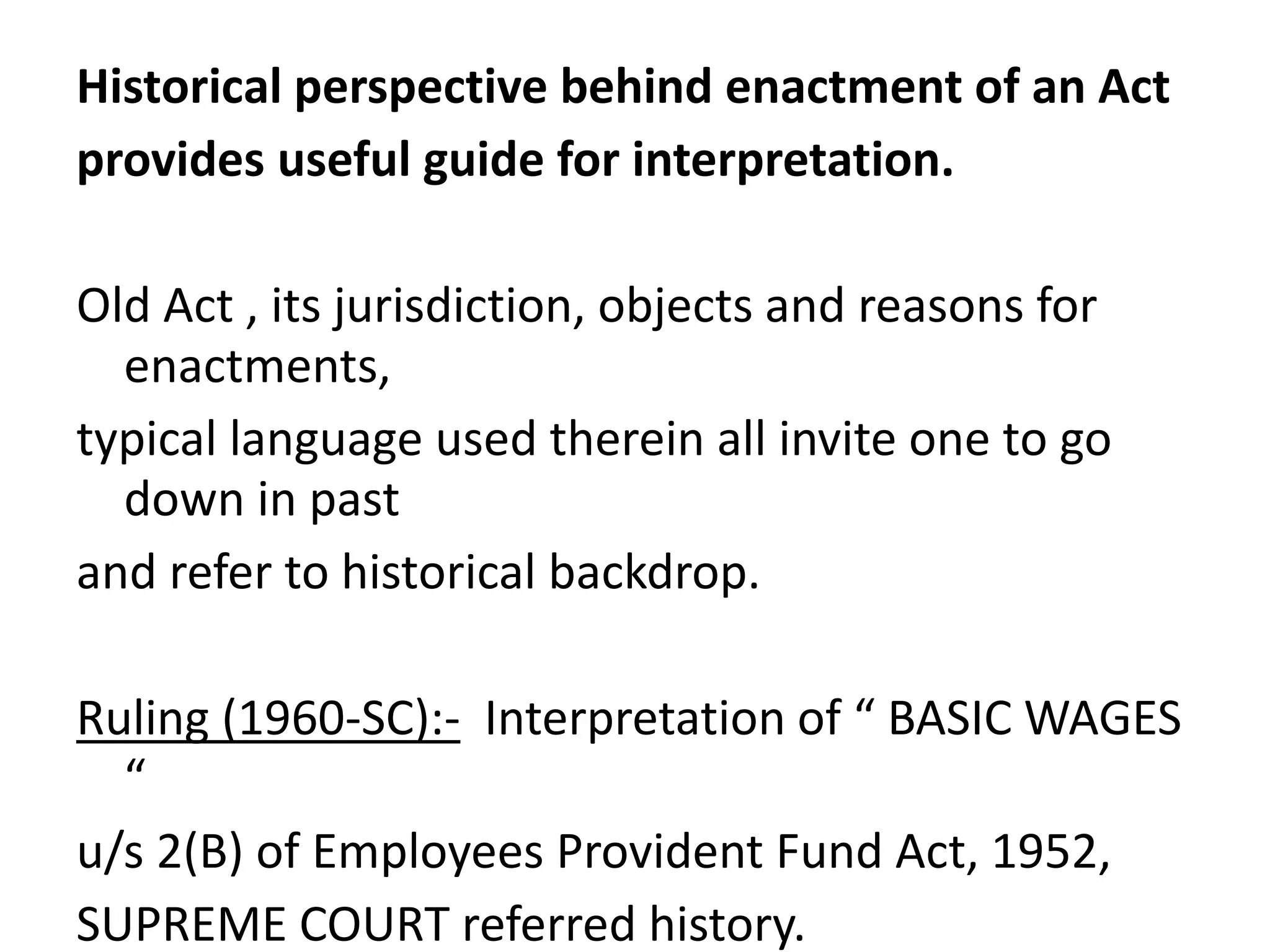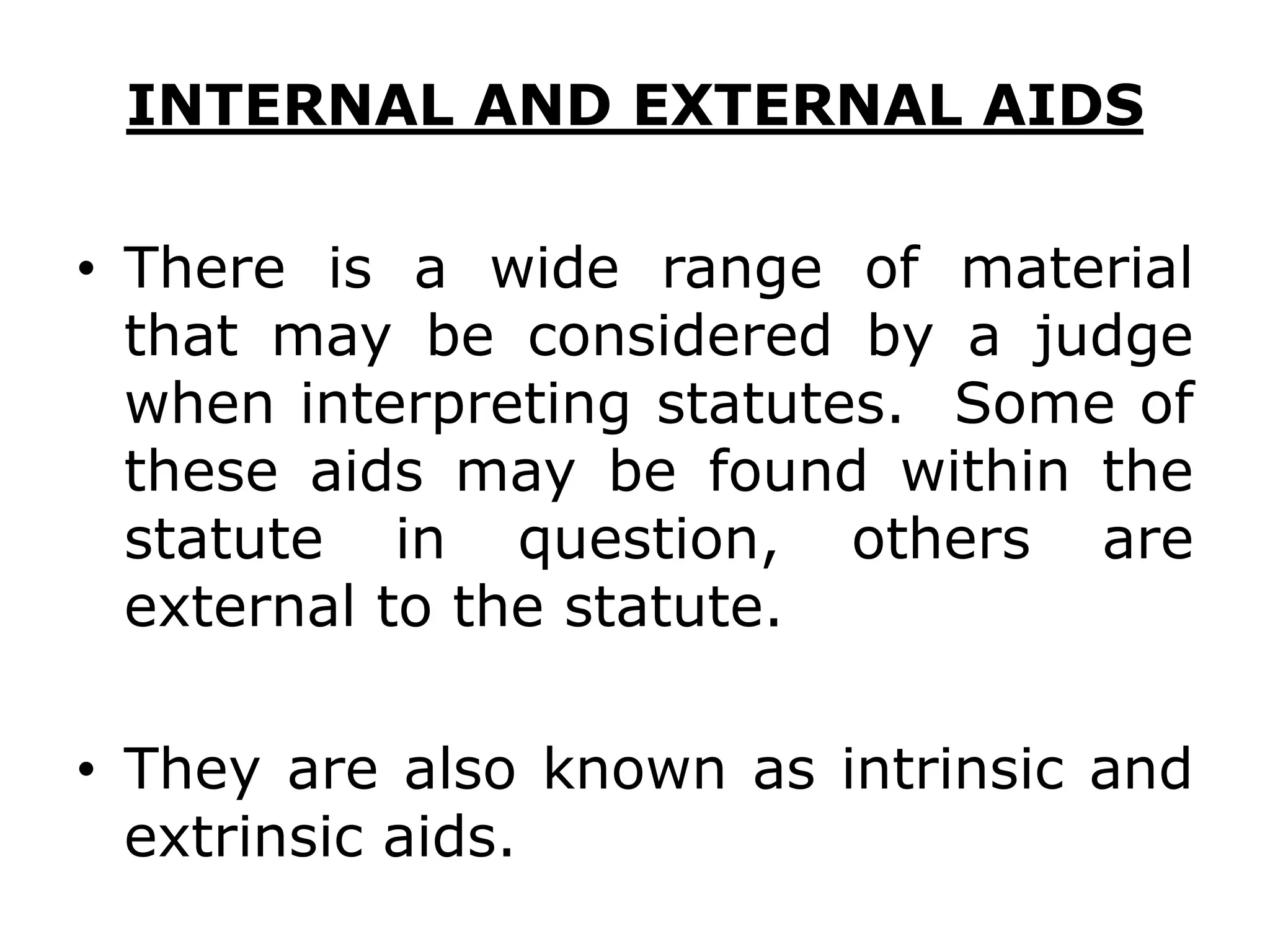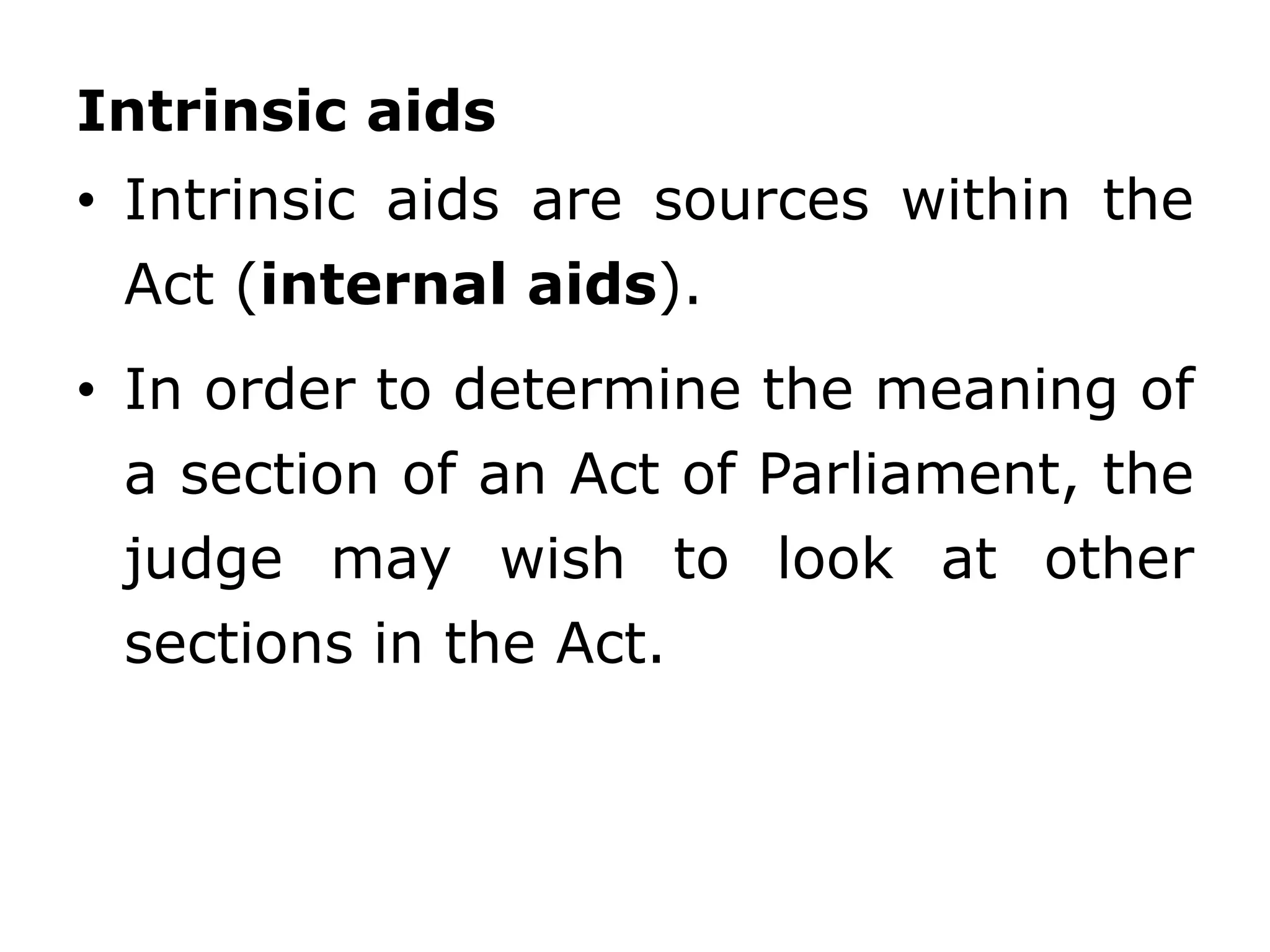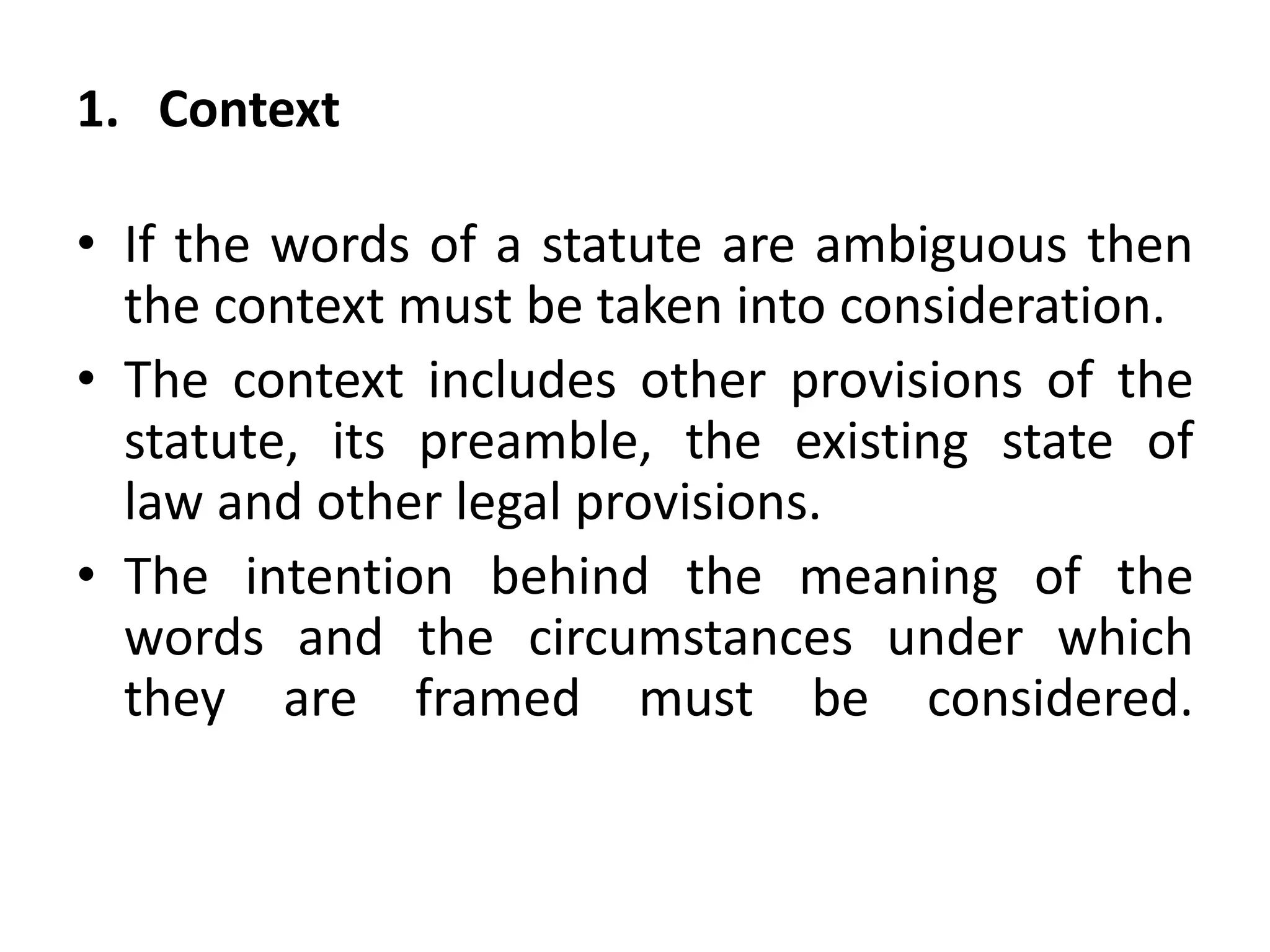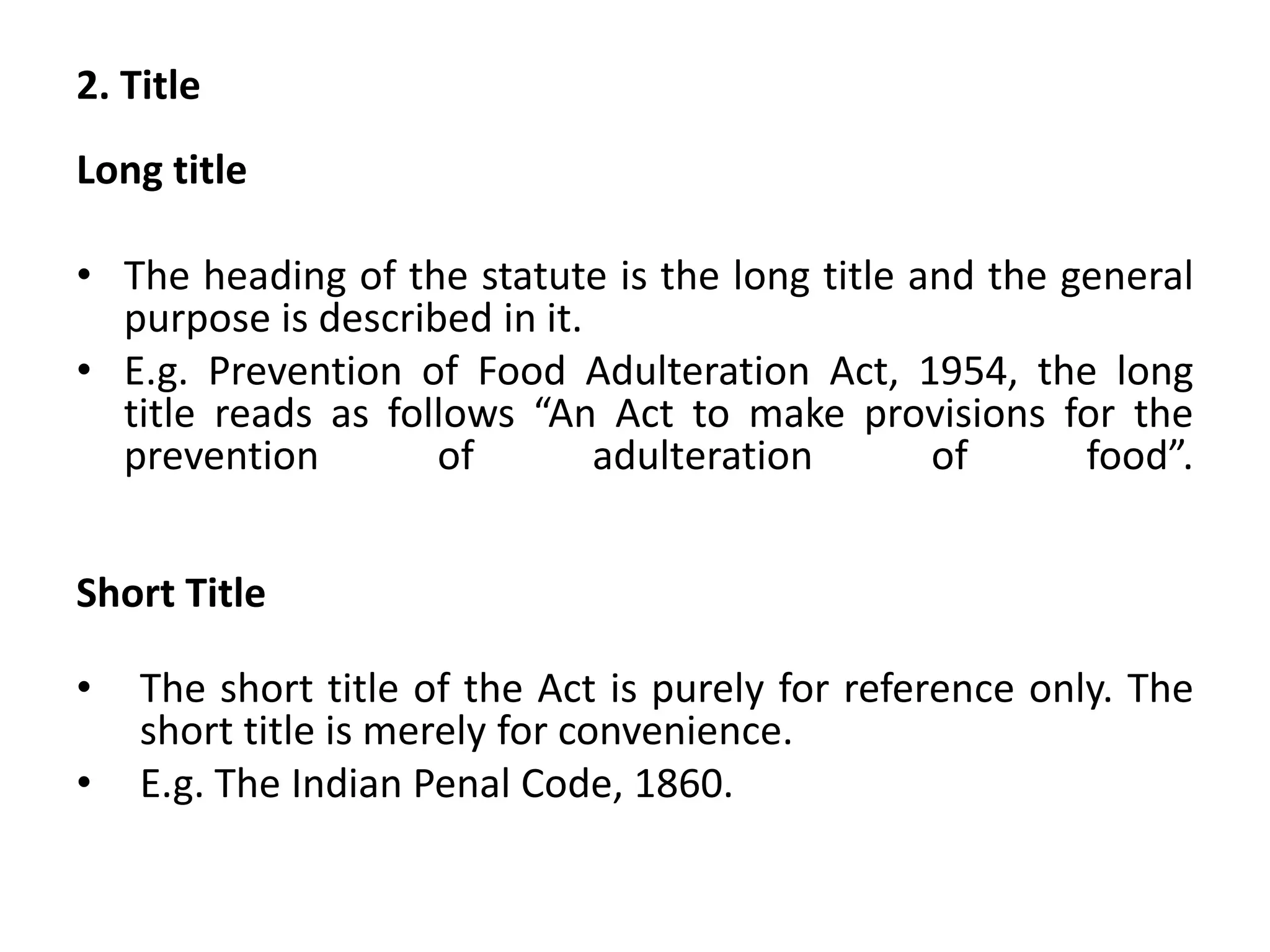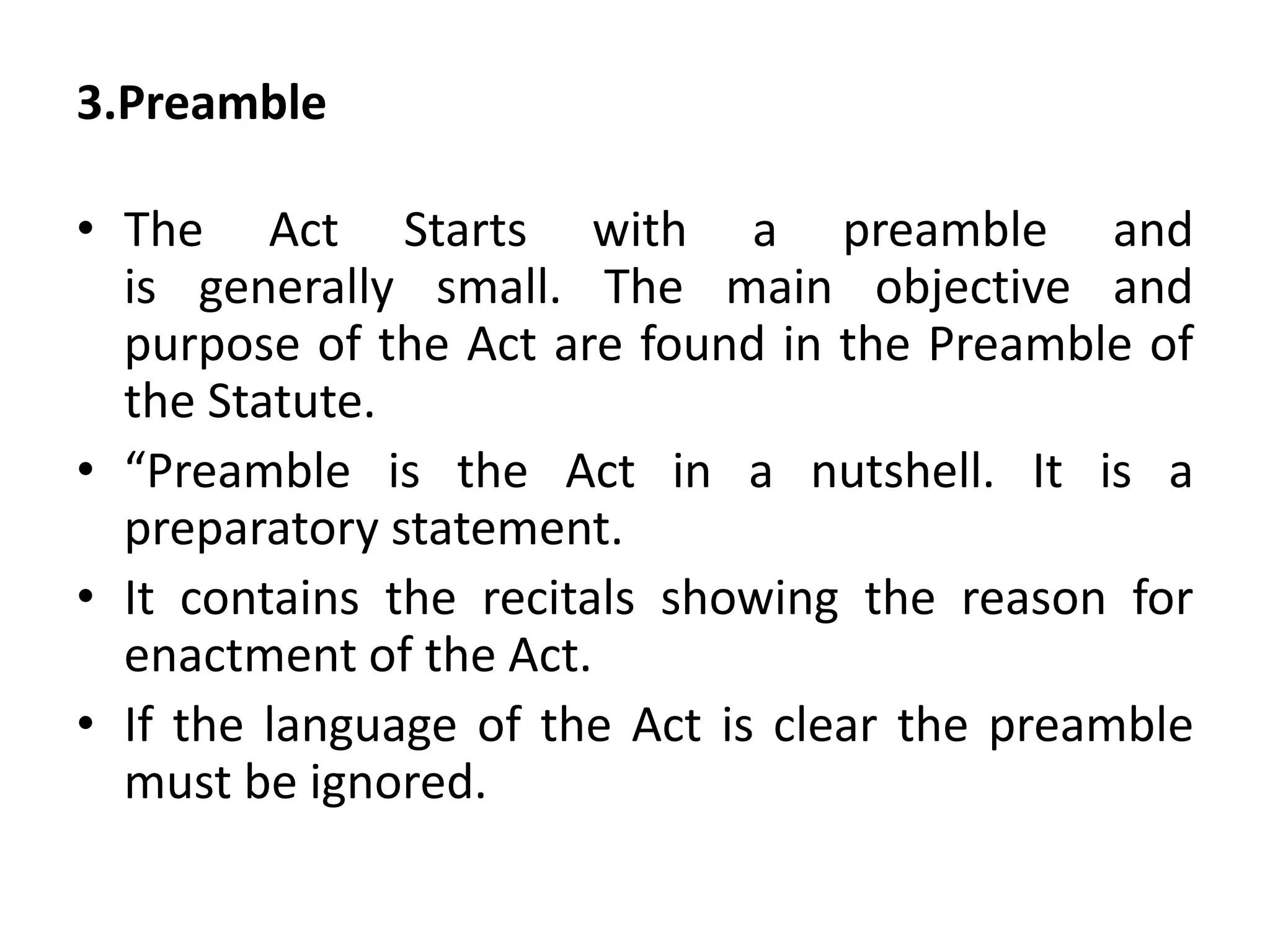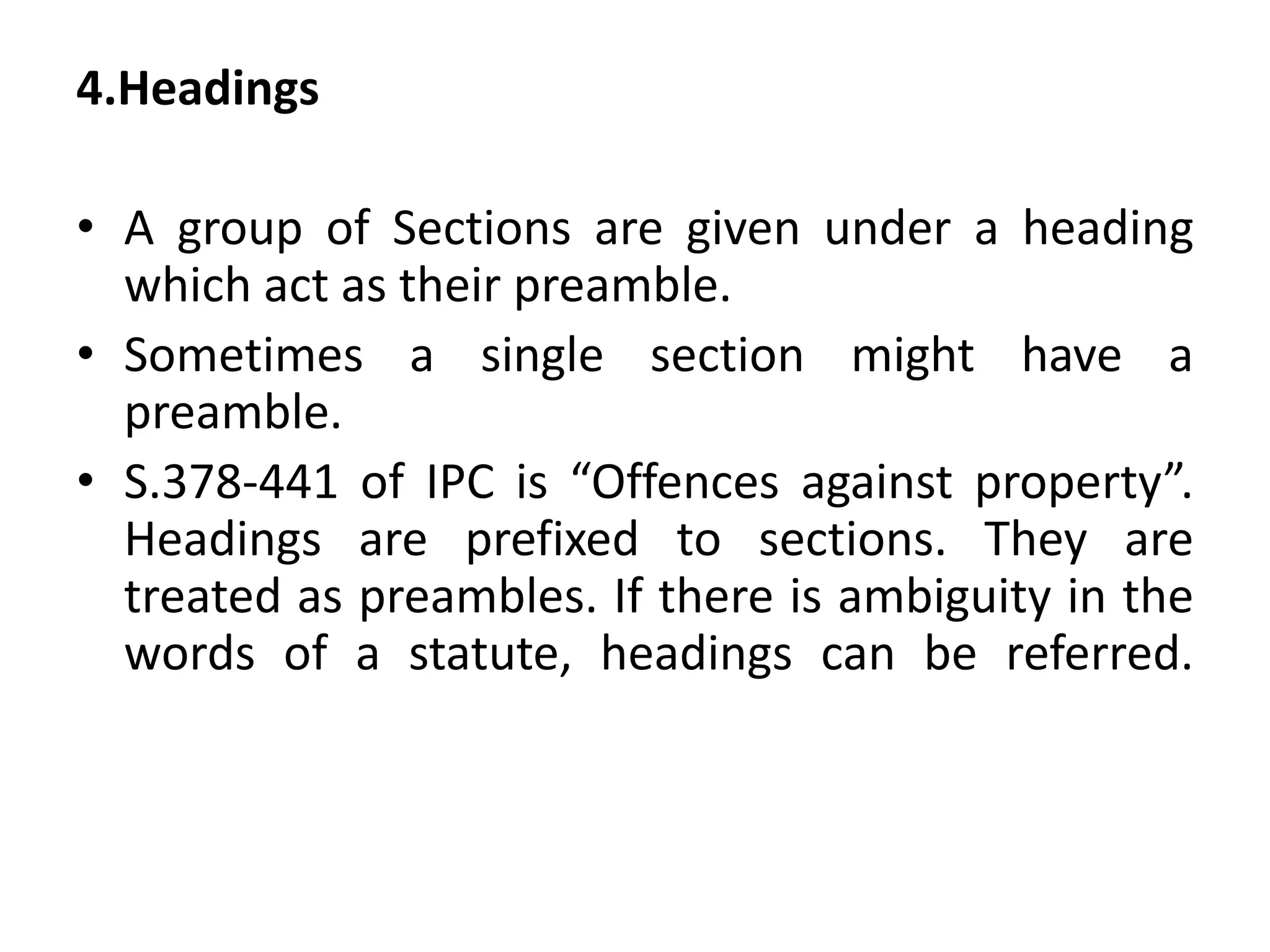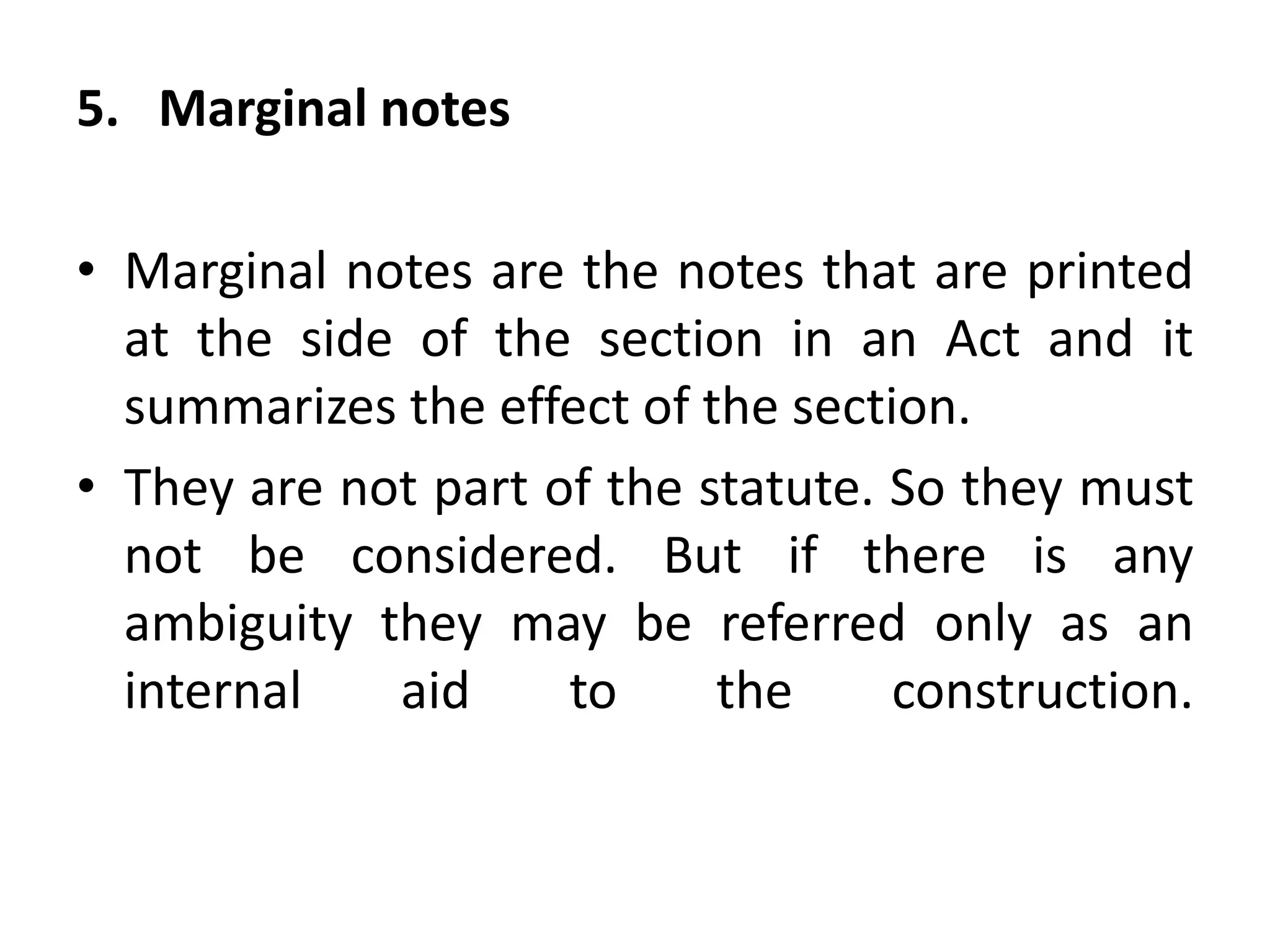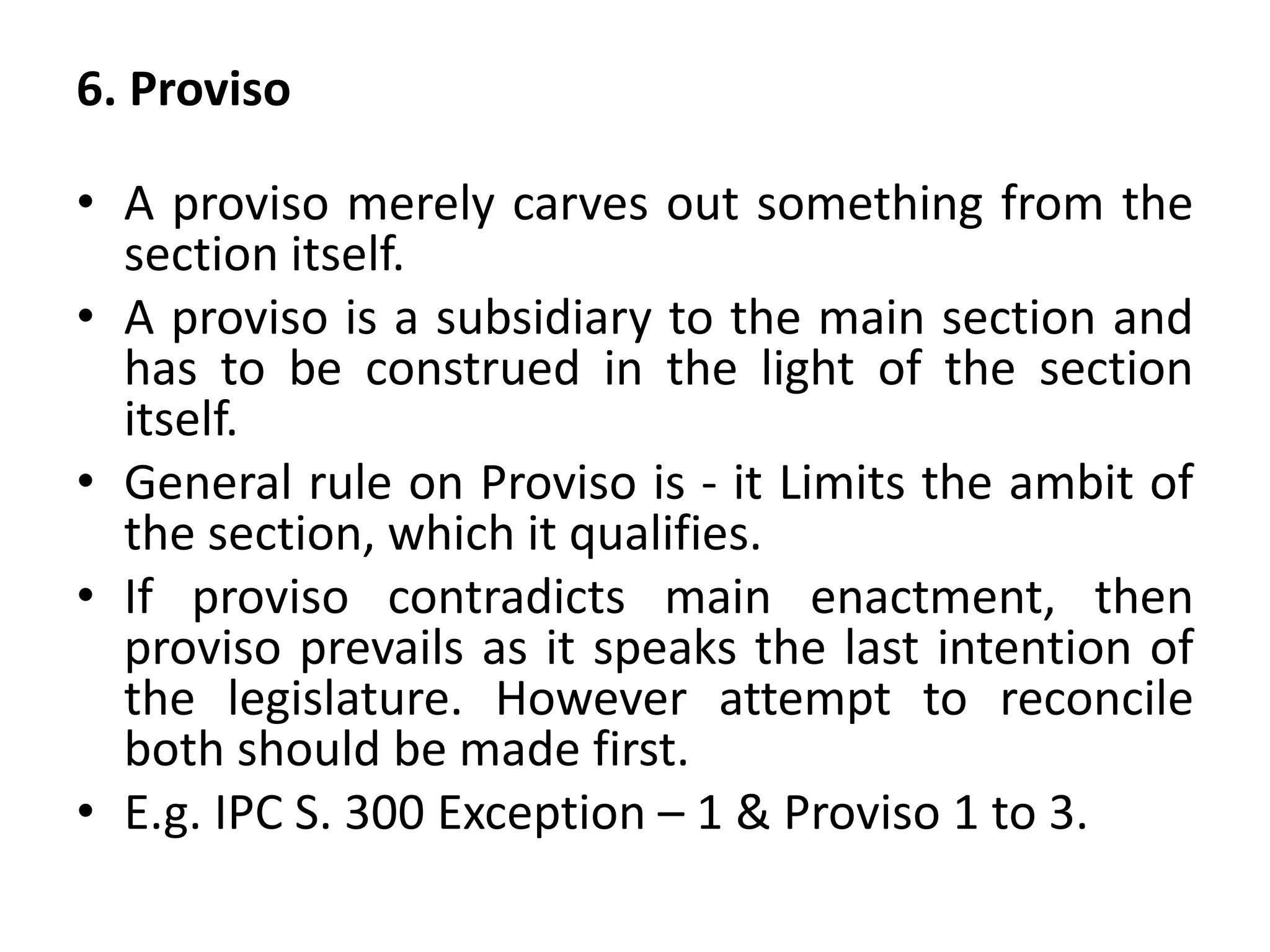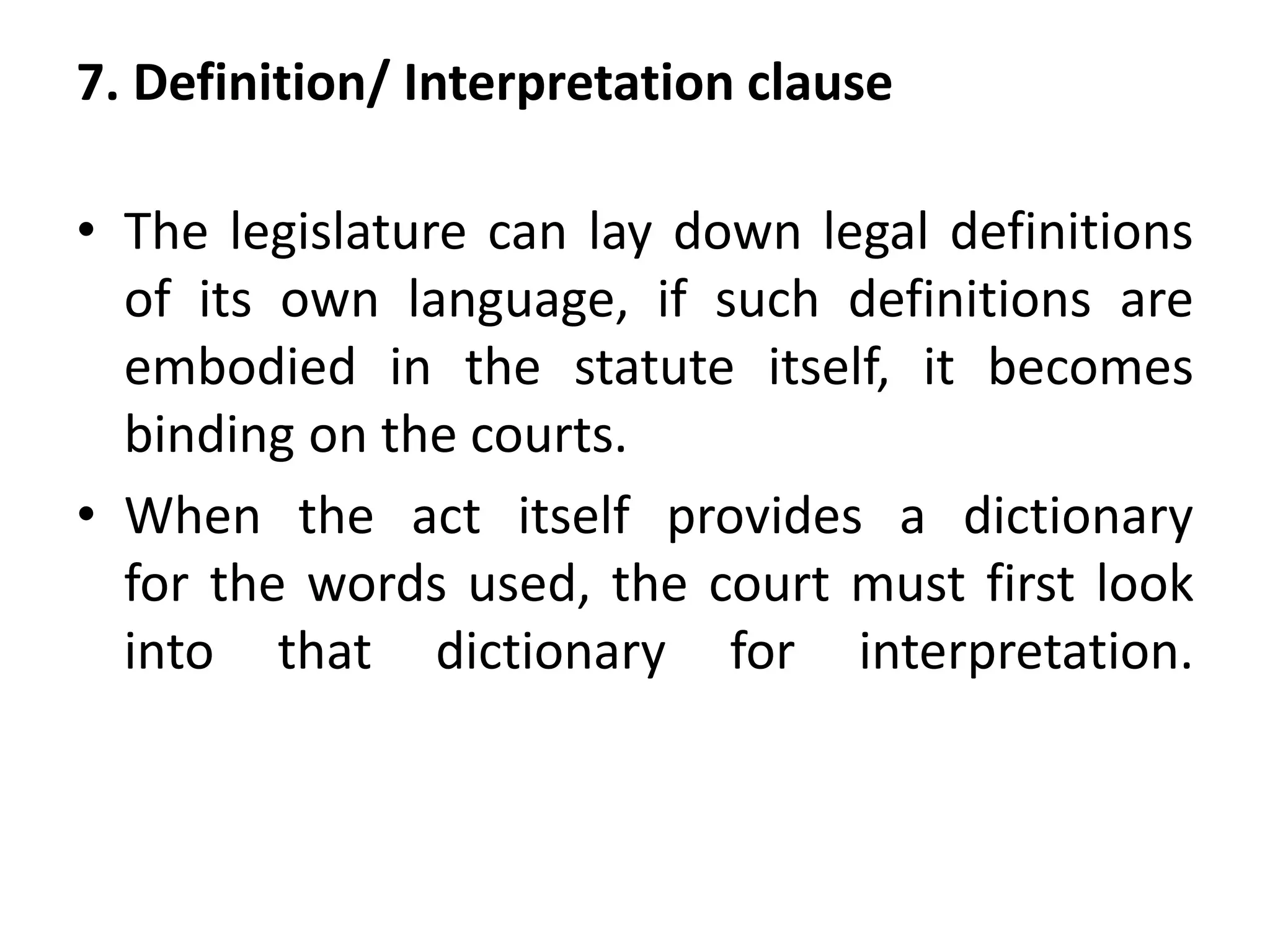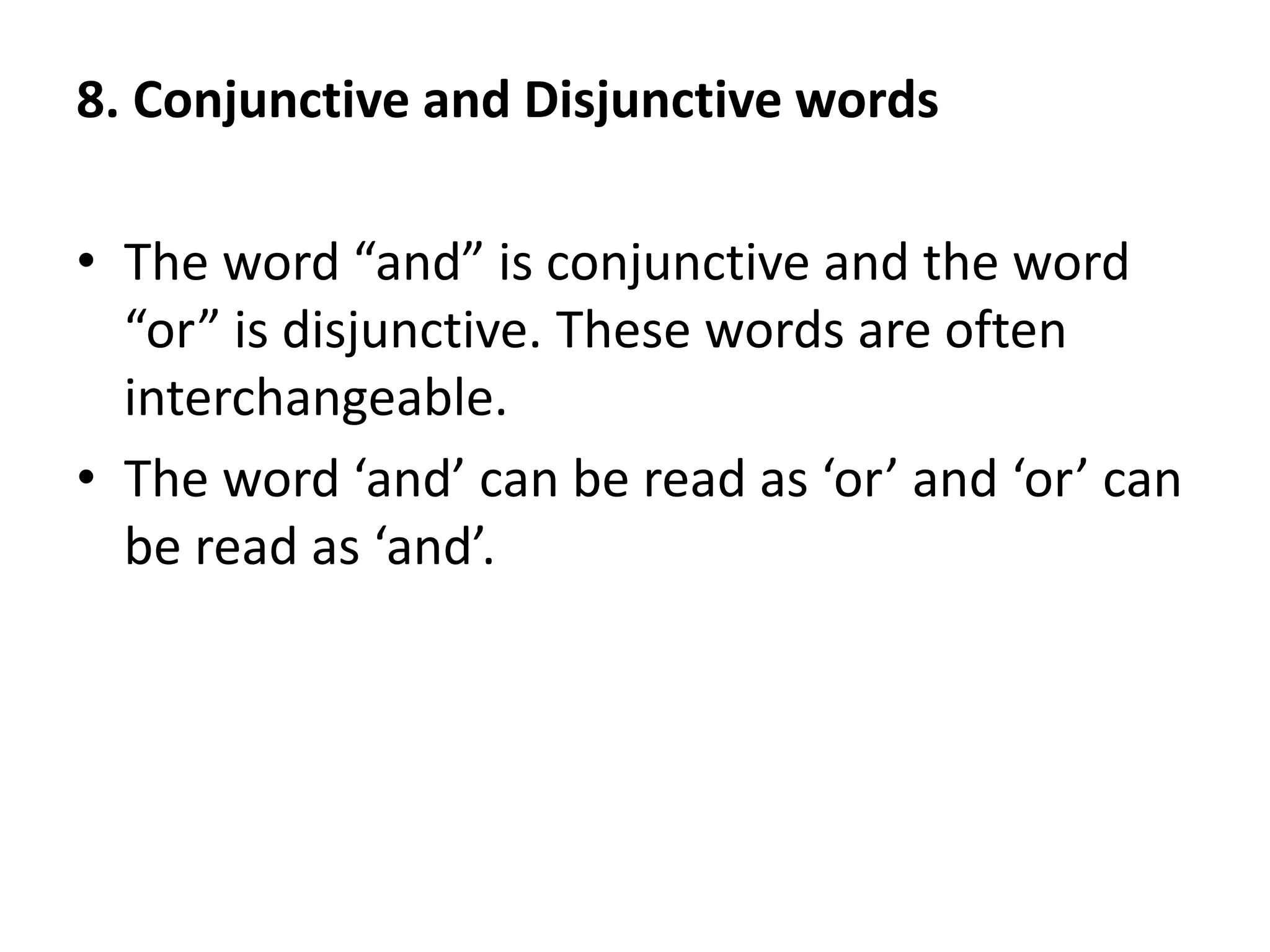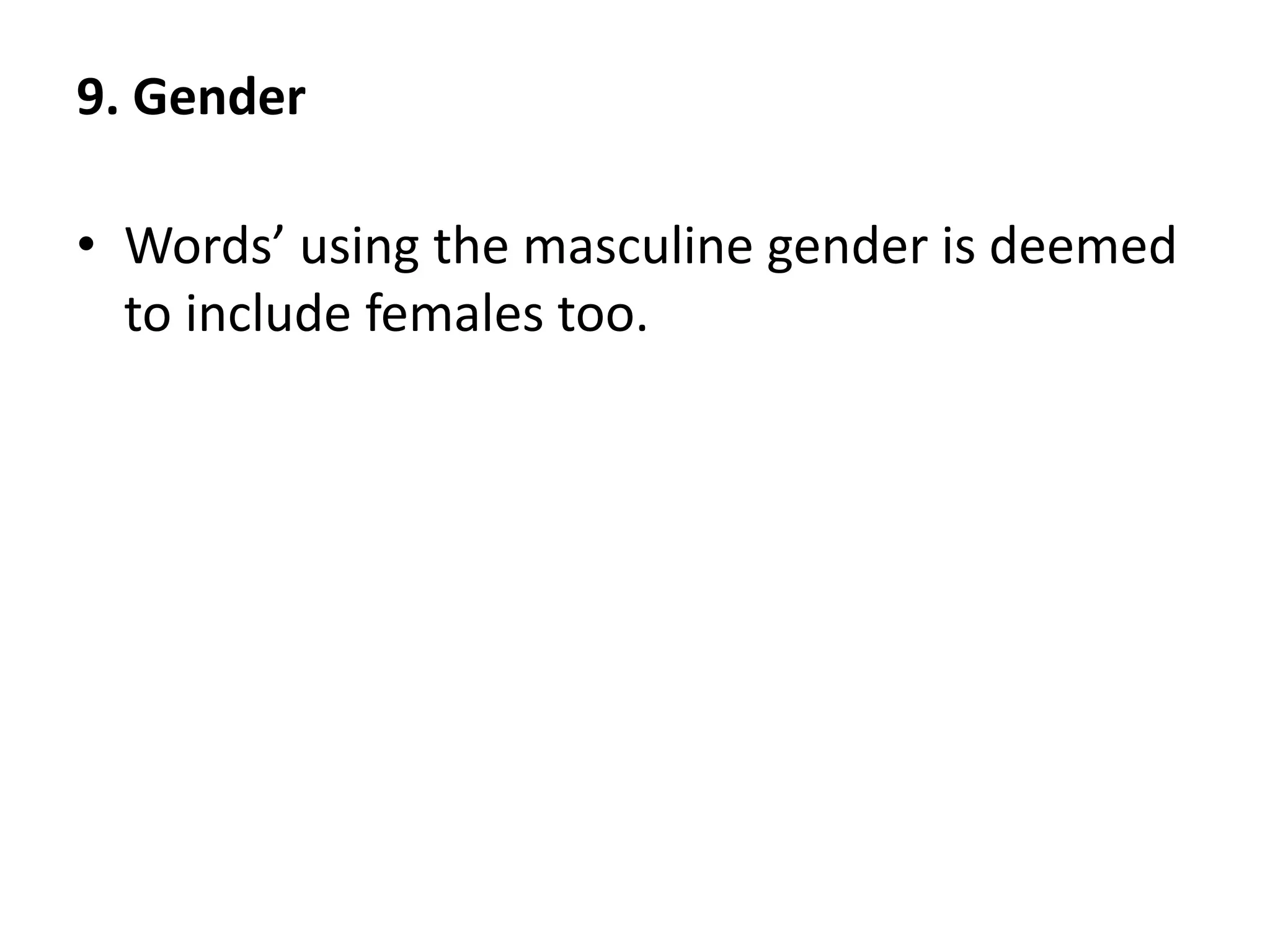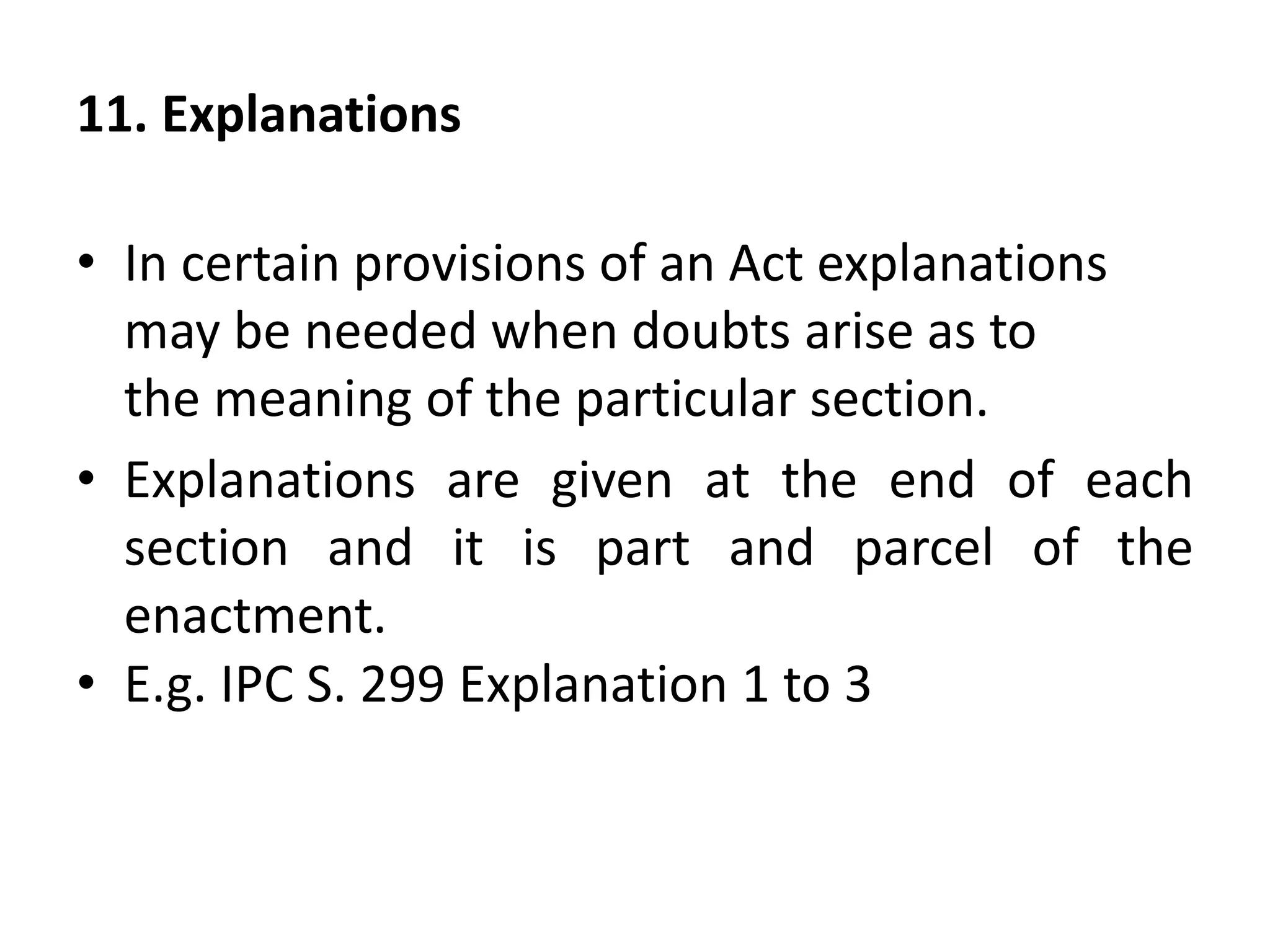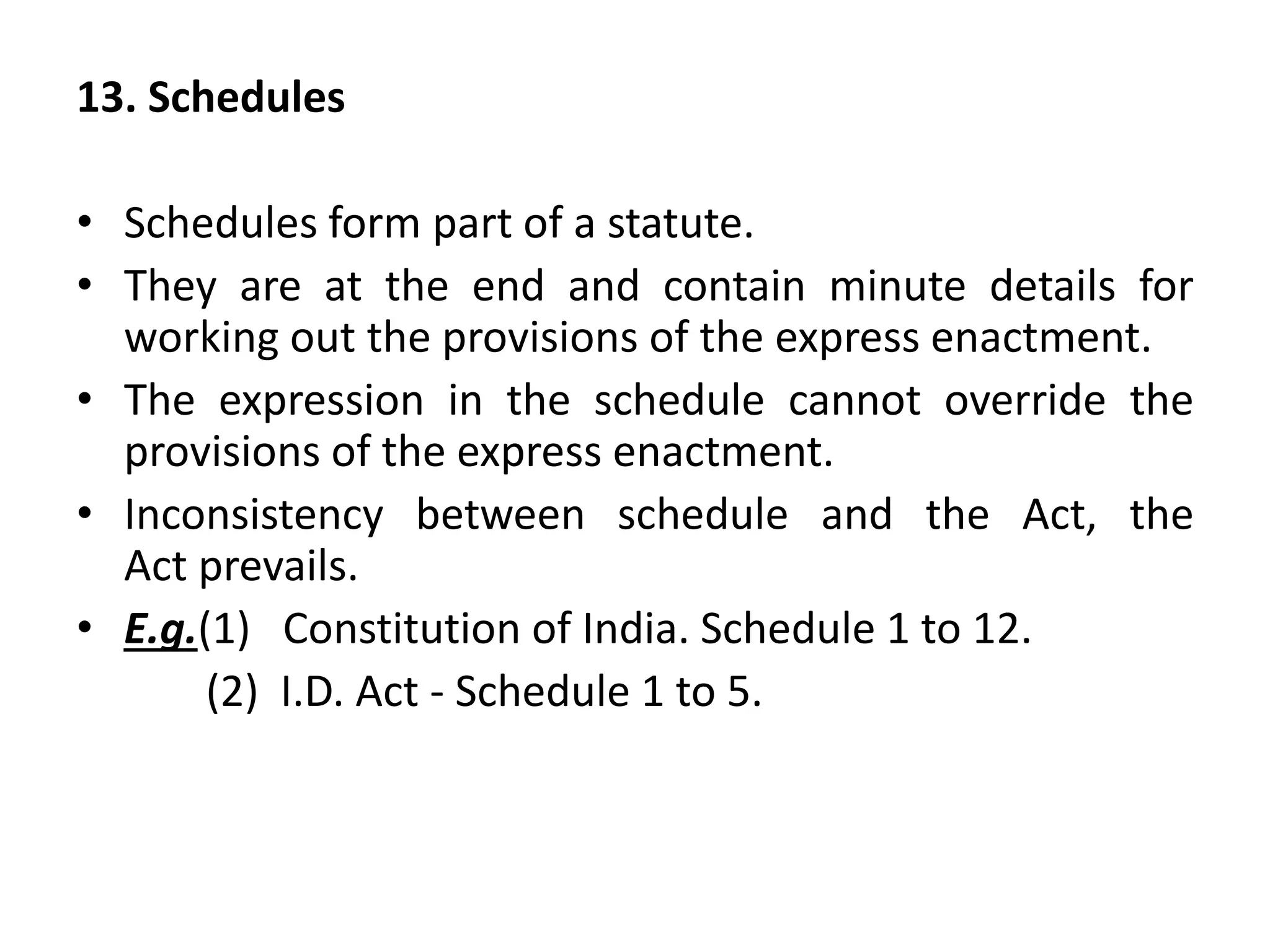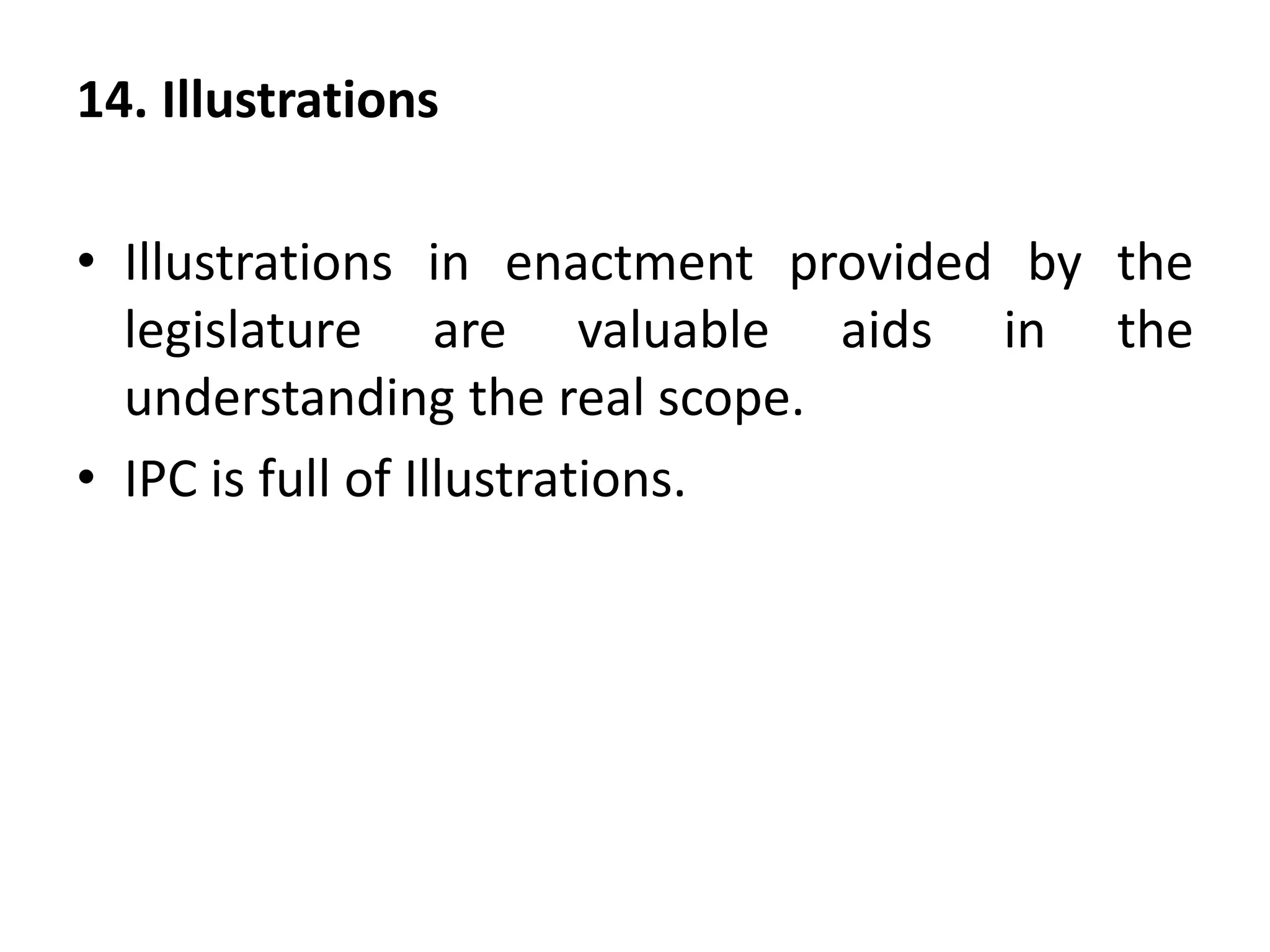This document discusses various aids that judges use when interpreting statutes, including both intrinsic (internal) aids found within the statute as well as extrinsic (external) aids outside the statute.
Some key intrinsic aids discussed are other provisions and context within the act, the title, preamble, headings, marginal notes, provisos, definitions, exceptions, schedules, and illustrations. External aids include parliamentary history, historical facts, subsequent developments, reference to other statutes, contemporary opinion, policy behind the act, precedent, and dictionaries.
The document provides examples of different intrinsic aids like definitions, exceptions, and illustrations used in the Indian Penal Code to help interpret provisions. It emphasizes that the intention of the legislature and circumstances around an
